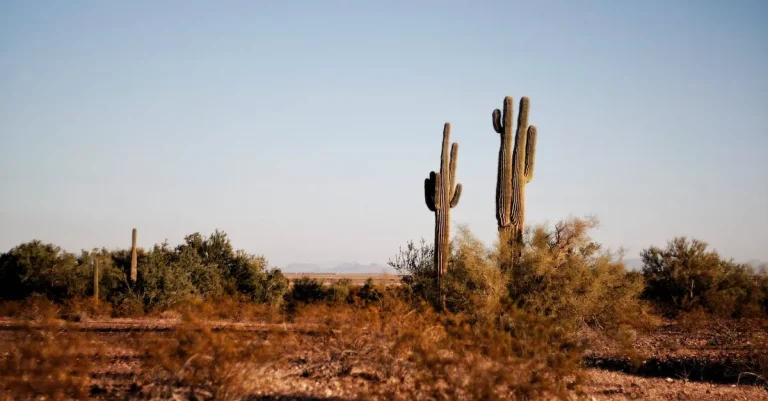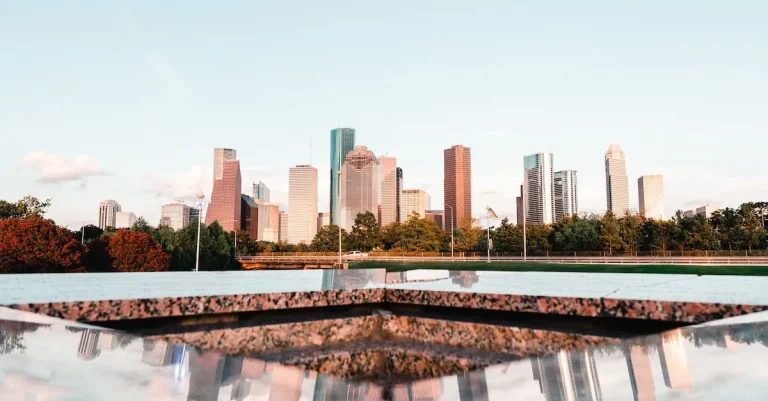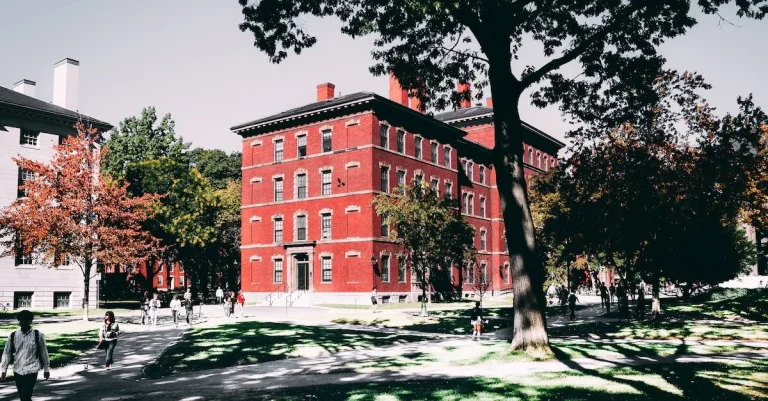How Old Is New York City?
New York City holds an almost mythical place in the American imagination as a bustling, gritty metropolis full of skyscrapers and opportunity. But how long has the Big Apple existed in its modern form? If you’re short on time, here’s a quick answer: While Native American tribes inhabited the area for thousands of years before Europeans arrived, New York City itself dates back over 400 years to Dutch colonization in the early 1600s. Keep reading to learn more about the long, complex history that shaped the iconic NYC we know today.
Pre-Colonial Era
The history of New York City dates back long before the arrival of European settlers. The city has a rich and diverse pre-colonial era that is worth exploring. Here, we will delve into the Native inhabitants, early European exploration, and the purchase of land from Native tribes.
Native Inhabitants
Before the arrival of Europeans, the area where New York City now stands was home to various Native American tribes. The Lenape people, also known as the Delaware Indians, were the main inhabitants of the region.
They lived in small villages along the rivers and practiced agriculture, hunting, and gathering. The Lenape had a rich culture and strong ties to the land, which can still be seen in the city’s place names, such as the Bronx and Manhattan.
Early European Exploration
In the early 17th century, European explorers began to venture into the area that would later become New York City. The first recorded European to visit the region was the Italian explorer Giovanni da Verrazzano in 1524. He sailed into the New York Harbor and explored the surrounding areas.
Over the next century, other explorers, such as Henry Hudson and Samuel de Champlain, also visited the region and mapped parts of it. These early explorations laid the groundwork for future European settlement in the area.
Purchase from Native Tribes
The purchase of land from Native tribes played a significant role in the establishment of New York City. In 1626, the Dutch West India Company purchased the island of Manhattan from the Lenape tribe for goods worth 60 guilders, which is estimated to be around $24 at the time.
This transaction, known as the “Manhattan Purchase,” marked the beginning of European settlement in the area. Over the years, more land was acquired from Native tribes through treaties and negotiations, shaping the boundaries of what would become New York City.
The pre-colonial era of New York City is a fascinating period in its history. It is important to recognize and appreciate the Native inhabitants who lived on the land long before the arrival of Europeans. Their contributions and cultural heritage continue to shape the city to this day.
Colonial Settlement
The history of New York City dates back to the colonial era when it was first settled by European explorers. The city’s colonial roots can be traced back to the 17th century when it was known as New Amsterdam.
Dutch Colony of New Amsterdam
In 1624, the Dutch West India Company established a trading post on the southern tip of Manhattan Island, which would later become the foundation of New Amsterdam. The settlement quickly grew as a trading hub, attracting merchants from various parts of the world.
The Dutch influence on the city can still be seen today, with many street names and architectural elements reflecting the city’s Dutch heritage. For example, Wall Street, one of the most famous financial districts in the world, gets its name from the defensive wall that the Dutch built to protect the settlement.
British Takeover
In 1664, the British fleet sailed into New Amsterdam Harbor and seized control of the settlement from the Dutch. The city was renamed New York in honor of the Duke of York, who later became King James II of England.
The British brought their own traditions and governance to the city, which shaped its future development. Under British rule, New York City expanded rapidly and became an important center of trade and commerce.
American Revolution
New York City played a significant role in the American Revolution, with several key events taking place within its borders. The city was occupied by British troops for most of the war, and it became a center of loyalist support.
However, the tide turned in favor of the American Patriots when General George Washington led his troops to victory in the Battle of Yorktown in 1781. This decisive battle led to the end of British rule in America and ultimately paved the way for the birth of the United States.
Throughout its colonial history, New York City has undergone significant transformations and has emerged as one of the most iconic cities in the world. Its rich colonial heritage is still celebrated today, attracting millions of tourists from around the globe.
To learn more about the history of New York City, you can visit history.com or nypl.org.
19th Century Industrialization
The 19th century marked a period of rapid industrialization in New York City, transforming it from a small trading post into a bustling metropolis. This era was characterized by significant developments in various sectors, including population growth, immigration, and infrastructure.
Population Explosion
During the 19th century, New York City experienced a remarkable population explosion. The city’s population soared from around 60,000 in 1800 to over 1 million by 1860. This exponential growth can be attributed to a combination of factors, including the influx of immigrants seeking better economic opportunities and the expansion of industries in the city.
The population boom had a profound impact on the city’s social and cultural fabric. Neighborhoods became crowded, and tenement housing emerged to accommodate the growing number of residents. These cramped living conditions often resulted in poor sanitation and health issues, leading to the need for improved infrastructure.
Rise of Immigrant Neighborhoods
New York City became a magnet for immigrants during the 19th century, with waves of newcomers arriving from different parts of the world. Immigrants from Europe, particularly Ireland and Germany, sought refuge from political unrest and economic hardships.
They settled in distinct neighborhoods, forming tight-knit communities that preserved their cultural heritage.
For example, the Lower East Side became a predominantly Jewish neighborhood, while areas such as Little Italy and Chinatown were established by Italian and Chinese immigrants, respectively. These immigrant neighborhoods played a crucial role in shaping the city’s identity and contributing to its vibrant cultural diversity.
Infrastructure Growth
As New York City experienced rapid population growth and the rise of immigrant neighborhoods, there was an urgent need to expand and improve its infrastructure. The city embarked on ambitious infrastructure projects to accommodate the increasing demands of its residents.
One notable project was the construction of the Croton Aqueduct, which brought clean water to the city and helped alleviate the sanitation issues caused by the population explosion. Another significant development was the creation of a comprehensive transportation system, including the establishment of the first subway line in 1904.
These infrastructure improvements not only enhanced the quality of life for New Yorkers but also facilitated the city’s economic growth. The expansion of transportation networks, for instance, facilitated the movement of goods and people, fueling the growth of industries and commerce in the city.
20th Century Global Metropolis
New York City has long been regarded as one of the most vibrant and influential cities in the world. Throughout the 20th century, it experienced tremendous growth and became a global metropolis that continues to shape the cultural, economic, and social landscape of the modern world.
Skyscraper Boom
One of the defining features of New York City’s transformation in the 20th century was the skyscraper boom. In the early 1900s, the city witnessed a surge in tall building construction, with iconic structures like the Empire State Building and the Chrysler Building dominating the skyline.
The construction of these towering landmarks not only showcased architectural prowess but also symbolized the city’s ambition and economic power.
The skyscraper boom in New York City was fueled by factors such as the availability of steel, advancements in engineering and construction techniques, and the city’s growing population and demand for office space.
These towering structures not only provided a solution to the limited land availability but also became symbols of progress and innovation.
Post-WWII Changes
The aftermath of World War II brought significant changes to New York City. As the United States emerged as a global superpower, the city experienced an influx of people seeking better opportunities and a fresh start.
This led to a wave of urbanization and population growth in New York City, with suburbs expanding and new neighborhoods developing.
The post-WWII era also witnessed a shift in the city’s economic landscape. Manufacturing industries declined, giving way to a service-based economy. Wall Street became the financial hub, attracting investors from around the world.
The city’s cultural scene also flourished, with the birth of the Beat Generation and the rise of Broadway as a world-renowned theater district.
Modern Challenges
Despite its status as a global metropolis, New York City continues to face numerous challenges in the 21st century. One of the major challenges is maintaining its infrastructure to support the growing population and the demands of a modern city.
The aging subway system, for example, is in need of significant upgrades and renovations to meet the needs of millions of daily commuters.
Another challenge is the issue of affordable housing. As the cost of living in the city rises, many residents struggle to find affordable housing options, leading to an increase in homelessness and inequality.
Efforts are being made to address this issue through initiatives like affordable housing programs and rent stabilization measures.
Additionally, New York City faces the ongoing challenge of adapting to the impacts of climate change. Rising sea levels and extreme weather events pose a threat to the city’s infrastructure and coastal areas.
The city has implemented various measures to mitigate these risks, including the development of waterfront parks and the implementation of sustainable building practices.
Conclusion
While Native peoples inhabited the New York City area for thousands of years, the city itself took shape with Dutch colonization over 400 years ago. Growing from a settlement to a colonial port, it exploded into a global metropolis over the 19th and 20th centuries. Today the ever-evolving Big Apple remains one of the oldest and most iconic cities in America.








